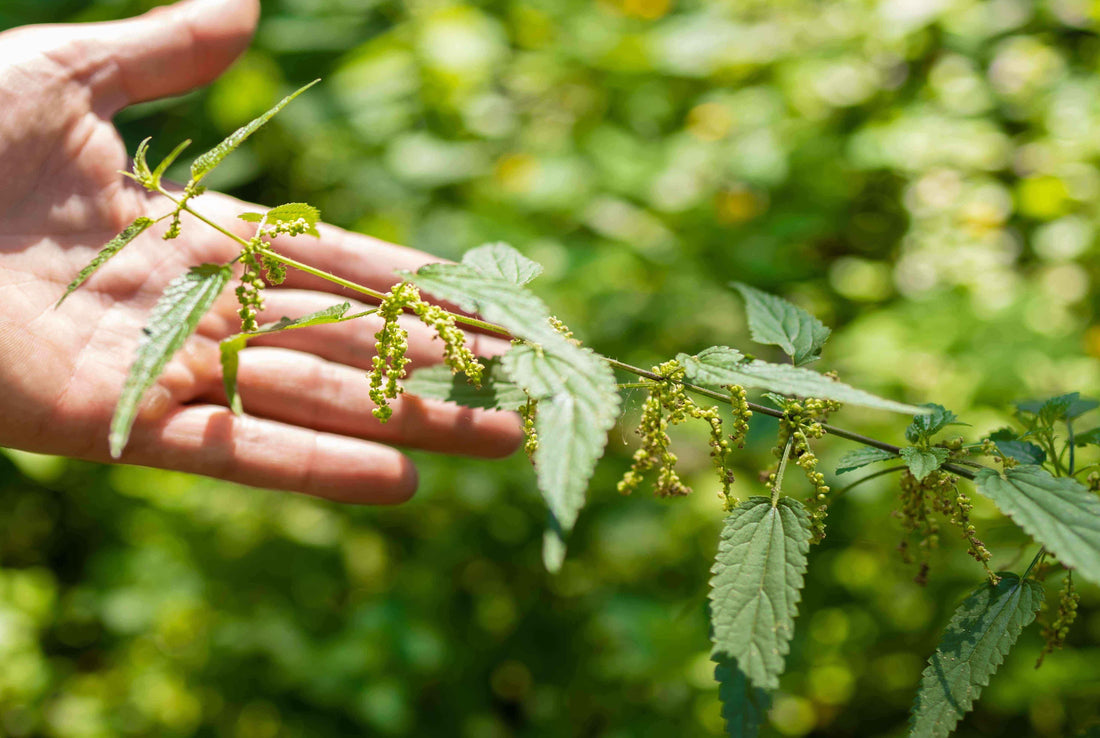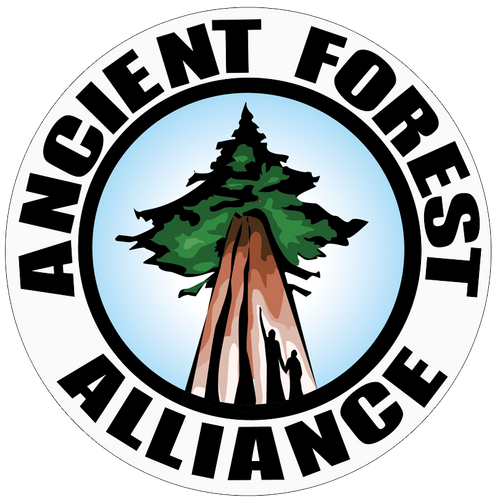
Wild Stinging Nettle: A Wild Superfood for Energy, Minerals, and Vitality
Share
Deep in the damp, fertile forests and along sunlit banks throughout Canada, a powerful medicinal plant thrives—wild stinging nettle (Urtica dioica). Often dismissed as a pesky weed due to its infamous sting, this plant is actually one of nature’s most nutrient-dense superfoods. Packed with iron, minerals, and vital nutrients, nettle has been used for centuries in traditional medicine and as a nourishing wild food.
Identifying & Harvesting Nettle Safely
Nettle grows in rich, moist soils—along riverbanks, forest clearings, and disturbed areas. Look for its serrated, heart-shaped leaves and tiny stinging hairs that release formic acid when touched. To harvest safely:
- Wear gloves to avoid the sting.
- Pick young tops in spring (most tender) or mature leaves before flowering.
- Dry or blanch to neutralize stingers (steaming, drying, or blending removes the sting).
Once processed, nettle can be used fresh, dried for tea, powdered, or cooked into soups and stews.
The Incredible Benefits of Wild Stinging Nettle
1. Iron Deficiency & Anemia Support
Nettle is one of the best wild sources of bioavailable iron, crucial for those with anemia or fatigue. Unlike synthetic iron supplements, which can cause digestive upset, nettle provides iron alongside vitamin C (which enhances absorption) and chlorophyll (which supports blood-building).
2. Rich in Essential Minerals & Electrolytes
Nettle is a powerhouse of minerals, including:
- Magnesium (supports muscle & nerve function)
- Calcium (great for bone health, often higher than spinach!)
- Potassium (balances electrolytes, supports heart health)
- Silica (strengthens hair, skin, and nails)
For athletes or those recovering from illness, nettle tea acts as a natural electrolyte replenisher.
3. Enhances Nutrient Absorption
Nettle contains compounds that stimulate digestion and improve nutrient uptake. Its mild bitterness triggers enzyme production, aiding in better assimilation of proteins and minerals from other foods.
4. Anti-Inflammatory & Allergy Relief
Nettle has natural antihistamine properties, making it excellent for seasonal allergies. Its anti-inflammatory effects also benefit those with arthritis or joint pain.
5. Hormonal Balance & Kidney Support
Traditionally used as a kidney tonic, nettle helps flush excess uric acid, reducing gout and bloating. It also supports hormonal health, particularly for women balancing menopause or menstrual irregularities.
Best Ways to Use Nettle: Tea, Powder, or Cooked?
1. Nettle Tea (Dried or Fresh)
- Pros: Gentle, hydrating, great for daily mineral intake.
- Best for: Long-term detox, allergy relief, electrolyte balance.
- Tip: Steep 1-2 tsp dried leaves in hot water for 5+ minutes.
2. Raw Nettle Powder
- Pros: Concentrated nutrients, easy to add to smoothies or soups.
- Best for: Quick mineral boost, iron supplementation.
- Tip: Mix into yogurt, oatmeal, or green smoothies.
3. Cooked Nettle (Soups, Stews, Pestos)
- Pros: Delicious, sting-free, retains most nutrients when lightly cooked.
- Best for: Culinary use—think nettle spanakopita, soups, or sautéed greens.
- Tip: Blanch leaves briefly before use to remove stingers.
The Best Times to Harvest Stinging Nettle for Peak Nutrition & Flavor
Wild stinging nettle (Urtica dioica) is a versatile and nutrient-packed plant, but its potency—and even its edibility—changes with the seasons. As a forager in the Kootenays, timing your harvest ensures the best taste, texture, and medicinal benefits. Here’s when to gather nettle throughout the year:
1. Early Spring (March – May) – The Prime Harvest for Tender Greens
Best for: Fresh eating, soups, pestos, and drying for tea.
- Why? Young nettle shoots emerge as some of the first greens in spring, packed with peak nutrients after winter dormancy.
- What to look for: Bright green, top 2-4 inches of new growth (most tender before stems toughen).
- Bonus: Spring nettles have a milder flavor and are less fibrous, perfect for fresh culinary use.
Foraging Tip: Wear gloves and snip the tops with scissors—this also encourages bushier regrowth.
2. Late Spring to Early Summer (May – June) – Still Good, But Getting Tougher
Best for: Tea, cooked dishes, and fermentation (nettle beer/kraut).
- Why? As days lengthen, nettles grow taller and develop more silica and fiber, making them better suited for cooking or drying.
- What to look for: Leaves are still vibrant but avoid flowering tops (they develop gritty particles called cystoliths, which can irritate kidneys in excess).
- Bonus: Larger leaves mean higher mineral content (great for iron-rich infusions).
Foraging Tip: Stick to shady patches—nettles in full sun may be tougher.
3. Summer (July – August) – Seeds & Late-Season Uses
Best for: Seed harvesting (nutritional powerhouse) and medicinal roots.
- Why? Mature nettle plants produce tiny, protein-rich seeds (used for adrenal support and energy).
- What to look for: Hanging clusters of green-to-brown seeds (shake into a bag).
- Root harvest: In late summer/fall, nettle roots (used in prostate and urinary health formulas) can be dug, washed, and dried.
Caution: Avoid leaves once flowering is well underway—older leaves can be harsh.
4. Fall (September – October) – A Second Spring in Mild Climates
Best for: Late-season greens (if regrowth occurs after rain).
- Why? In wet regions like the Kootenays, nettles sometimes sprout fresh growth in early fall, especially after rains.
- What to look for: New, young leaves (similar to spring harvest).
- Bonus: Fall-harvested nettles may have renewed sweetness after summer heat.
Foraging Tip: Great time to wildcraft nettle seeds if missed earlier.
Winter (November – February) – Dormant but Not Useless
Best for: Dried or frozen nettle (if preserved earlier).
- Why? Fresh nettle dies back in winter, but dried leaves/roots/seeds remain potent.
- Alternative: Some coastal BC regions have mild winters where nettle persists—check sheltered, south-facing slopes.
Pro Tips for Year-Round Nettle Harvesting
- Morning harvests = highest nutrient density (plants are hydrated).
- Avoid roadsides/polluted areas (nettles absorb heavy metals).
- Dry or blanch immediately to preserve freshness.
Final Thought: Sync with the Seasons
For the best flavor and nutrition, prioritize spring shoots and fall regrowth. For medicinal roots and seeds, late summer is key. By aligning your harvest with nettle’s life cycle, you’ll unlock its full potential—whether for iron-rich teas, mineral-packed pestos, or revitalizing tonics.
Final Thoughts: A Forager’s Secret to Vitality
Wild stinging nettle is a free, abundant, and incredibly nutritious plant that deserves a place in every forager’s pantry. Whether you sip it as tea, blend it into powders, or cook it into meals, this humble weed can transform your health—naturally.
Next time you’re wandering the Kootenay forests, don’t overlook the nettle patch. With gloves in hand, you’re just a harvest away from nature’s perfect multivitamin.
Happy foraging! 🌿

